War
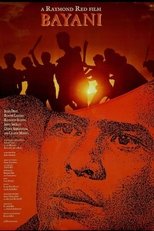
Heroes
March 24, 1992
Independent filmmaker Raymond Red's first crossover to full-length feature is a highly visual chronicle of the rise and fall of revolutionary hero Andres Bonifacio. Noted for its heavy stylistics and painstaking attention to filmic detail, the biopic also tackles the momentous events surrounding the Philippine struggle against Spanish colonialism. The historical epic is a most fitting cinematic memorial to the centenary of Philippine independence.
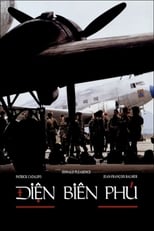
Diên Biên Phu
March 4, 1992
Vietnam, 1954. An American reporter finds himself in the middle of the battle of Điện Biên Phủ, between the French army and the Vietminh.
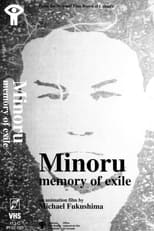
Minoru: Memory of Exile
March 3, 1992
The bombing of the American naval base at Pearl Harbor, by a nation he knew only by name, thrust nine-year-old Minoru Fukushima into a world of racism so malevolent he would be forced to leave Canada, the land of his birth. Like thousands of other Japanese Canadians, Minoru and his family were branded as an enemy of Canada, dispatched to internment camps in the interior of British Columbia, and finally deported to Japan. Directed by Michael Fukushima, Minoru's son, the film artfully combines classical animation with archival material. The memories of the father are interspersed with the voice of the son, weaving a tale of suffering and survival, of a birthright lost and recovered.

Paradise Under The Shade of Swords
March 3, 1992
19th century. Russia, one of the biggest and most powerful empires in the world is fighting a bloody war to subjugate the free peoples of the Caucasus. In 1828 Caucasian Imamate was established in order to unite Caucasian peoples against Russia under the banner of Islam. By 1834 the situation is dire. Ghazi-Muhammad, the leader of the Imamate, gets killed in an ambush by the Russian forces. One of his loyal warriors, Shamil, barely escapes alive. The fight must continue, but the future is uncertain.
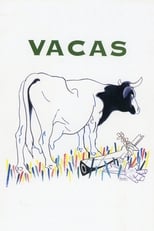
Cows
February 26, 1992
A film set in the Basque region, beginning in the Carlist war of 1875 and ending during the Spanish Civil war of 1936. The film portrays how one single act of cowardice shapes the life of the next three generations of two families and fuels the intense rivalry which will span the next sixty-one years.
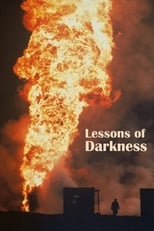
Lessons of Darkness
February 21, 1992
Shortly after the Gulf War, oil fires were raging all through Kuwait. In the week before this sea of fire would be extinguished, Werner Herzog filmed this apocalyptic landscape with its murky skies, scorched earth and capricious flames.
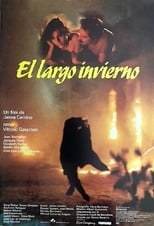
The Long Winter
February 15, 1992
In 1939, Ramón was a young man, caught up in his Barcelona family's involvement on the Republic side in the brutal Spanish Civil War. He and his family fled into exile ahead of Franco's troops. Now it is many years later, and he has come back to see how his old homestead fared in the intervening years. The only person he can find who is able to remember those years clearly is his family's old butler Claudio.
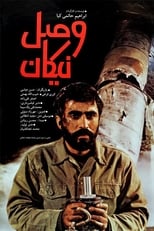
Union of the Righteous
February 1, 1992
Amir, who defuses missiles that fall on Iranian territory, insists on celebrating his wedding despite the dangerous situation made by the Iran-Iraq War.

Birds Leave in Autumn
January 31, 1992
There is a story from a Japanese prisoner of war who said that the good nature of Mongolians will lead to their rebirth as Mongolians in the afterlife. It is a film that values the honest character of the Mongolians, who are very kind and generous.

Shining Through
January 31, 1992
Spirited New Yorker Linda Voss goes to work for international lawyer and secret Office of Strategic Services operative Ed Leland just before World War II. As they fall in love, the United States enters the fight against Hitler, and Linda volunteers to work for Ed spying undercover behind Nazi lines. Assigned to uncover information about a German bomb, Linda also has personal motives to fulfill: discovering the fate of her Jewish family members in Berlin.
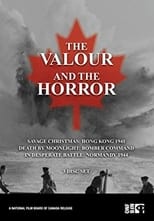
In Desperate Battle: Normandy 1944
January 26, 1992
A documentary, using dramatization of fact, that examines the Battle of Verrières Ridge, where on July 25, 1944 and not long after D-Day, an inexperienced battalion of the Canadian Black Watch Regiment launched a doomed attack and was defeated with heavy casualties by veteran German SS troops. Part of "The Valour and the Horror" mini series.
Shadow year Message
January 22, 1992
It is based on historical facts about the sad fate of an employee of the Ministry of Internal Affairs who did not kneel before death for the sake of the truth in the difficult times of repression in the 1930s.
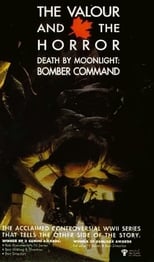
Death by Moonlight: Bomber Command
January 19, 1992
A documentary that uses dramatizations based on fact to tell the story of Canadian air crew in Canadian bomber squadrons under British command during World War II. Posits Royal Air Force Bomber Command "deliberately hid the truth" about RAF bomber crew survival rates, concealed plans about deliberately annihilating civilians, and betrayed the trust of Canadian military airmen. Part of "The Valour and the Horror" mini-series.

Two-Fisted Tales
January 18, 1992
The foul-mouthed, wheelchair-bound Mr. Rush introduces three adventure tales inspired by the EC Comics of the 1950s: "Showdown," "King of the Road," and "Yellow." This star-studded telefilm was an attempt to launch a second anthology series in the mold of "Tales from the Crypt." When the film failed to generate sufficient interest, the three tales were re-edited and shown as "Crypt" episodes.

A Savage Christmas: The Fall of Hong Kong
January 12, 1992
The documentary, using the dramatization of fact, makes the case that the Canadian government knowingly sent two unprepared infantry battalions to help defend Hong Kong in late 1941, fully aware that they may have been on a doomed mission. The C Force, consisting of about 2000 soldiers from the Winnipeg Grenadiers and the Royal Rifles of Canada (from Quebec City) were, with the other British, Indian and Hong Kong troops, attacked on December 8, 1941 and overwhelmed by Japanese troops, leading to numerous casualties and the surrender on Christmas day. The Canadians would spend more than 3 and half years as prisoners of war, in horrible conditions. Part of "The Valour and the Horror" mini series.
Man From The "Alpha" Team
January 2, 1992
The film tells the story of the life of a special detachment for soldiers whose every day is a real adventure ...

I Have Only You
January 1, 1992
After the war, a young man reuniting with his beloved must deal with the fact that she has gone insane.

Hotel Sunja
January 1, 1992
In 1992, the Yugoslav army and Serbian paramilitary forces captured one-third of Croatia as the country was engulfed in a state of war. A squad of fighters is defending their position in the small but strategically significant village of Sunja, where the invaders have surrounded them on three sides. Ivan Salaj, a young and gifted director who was still enrolled in film school at the time, chooses to use their story as the subject of his student film. Considered one of the most important films from a period when Croatian independence was still at stake, it provides an accurate portrayal of life on the front lines. What makes Hotel Sunja even more special is that it was made by a group of students who risked their lives to make the movie.

Turbid
January 1, 1992
Although the prison is hard, but a man can't be broken if he is brave, passionate, and loyal to his precious qualities, the kindness of the young ambulance driver and the female doctor shown through the ratio.
Bandi-Zo
January 1, 1992
Through the character of Gundalai, who is fighting with his life for the peace of his country, homeland and people, it is depicted that if the heart is right, not a single person will achieve victory without being alone, and he will become a legend among the people.